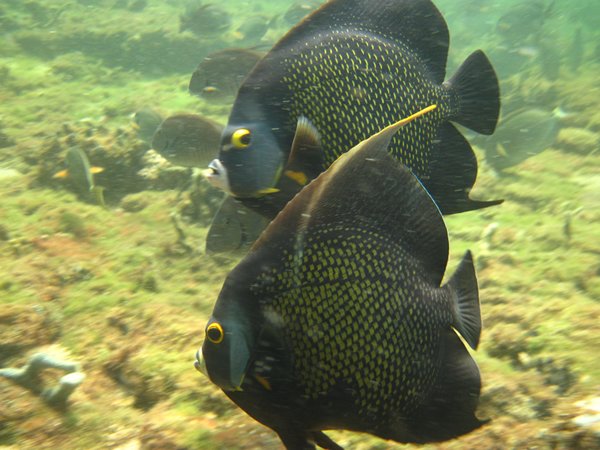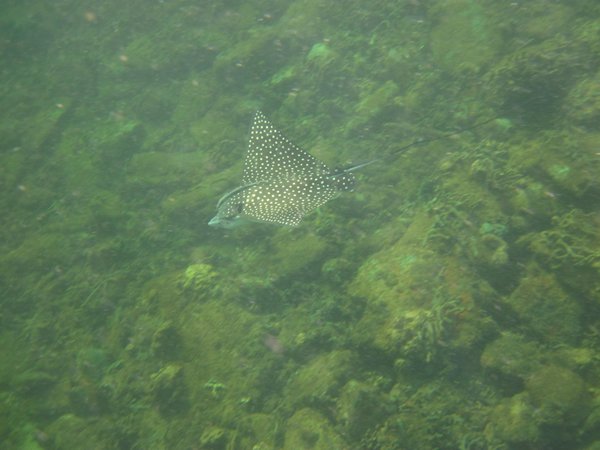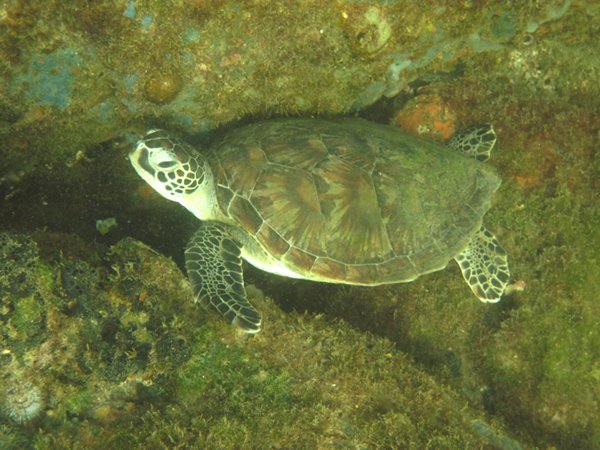Giant dolphins and following Angels

Sy-tucanon
Philip Fearnhead
Tue 22 Jan 2013 13:58
|
22nd January 2013 10:42.05N 61:39.97W
Before facing up to life of the hard while the boat is antifouled and other
tasks attended to, we decided to do a circuit of Monos Island to see if there
was anywhere we might anchor out for the night away from the hubbub of the
boatyards. While sailing quietly under the genoa up the Boca del Monos,
the narrow channel between Monos Island and the main island of Trinidad, we
encountered a group of dolphins playing. They were clearly engaged in
social activities and play, but came over to inspect the boat and is
occupants. It was only when they were alongside and cruising under the
bow, sometimes appearing to scrape their backs on it, that we realised that
these were unusually large dolphins – about 2.5 - 3m long and sturdily
built: Probably twice the weight of any dolphins we have previously
encountered. Our guide book to marine mammals failed to give a clear
identification, and they could have been large porpoises or small beaked
whales. Despite their size they had all the behavioural characteristics of
dolphins, from chasing each other around to leaping (well) clear of the
water. They seemed happy playing in the channel and didn’t follow us
far.
The circuit of Monos island showed it to be bounded largely by sea cliffs,
and the few shallow beaches shown on the charts were heavy shingle, unsuitable
for an overnight anchorage. We headed back into Scotland Bay for the night as it
provides good holding in the muddy bottom and is well protected by its
surrounding wooded hills. The following morning we moved the boat to an
anchorage just inside Scotland Bay from the Boca del Monos to allow us to
explore the edge of the channel by snorkelling.
Visibility was only 4-5m, though this was better than at the head of the
bay, but marine life was much more abundant. Where Scotland Bay meets the
main channel is a small island in the channel separated by about 20m of very
shallow water (1-2m), over which the current flows at a rate which defied
efforts to swim against it. The shallows were full of small fish, whose presence
attracted large garfish, a small barracuda and an eagle ray – all in search of
an easy meal. The pelicans also found it interesting and were slow to move
from their rocky perches by the water’s edge.
Just a few metres back into the bay the current was much weaker and Angel
fish, Butterfly fish, the ubiqitous Sergeant Majors and several unidentified
small fish were all to be found, together with small Yellow Tailed Snappers. The
sea bed was stony with meagre growths of purple coral and a few crinoid worms
unfolding their feather duster tentacles to catch passing plankton. Two turtles
(about half a metre long) were found resting on the bottom among the rocks ;
apparently the same type as we had often seen briefly raising their heads for
breath in the bay.
Swimming along the bottom in just a few metres of water, the Queen Angel
fish were the most attractive with their gold and royal blue hues, but they were
shy and usually single or in pairs flitting in and out among the rocks.
The French Angel fish, by contrast, would follow their alien visitors in growing
numbers to see what they were about. Not having necks, they rely on
rolling their eyes in their sockets to see around them, making them appear quite
comical as they swim by keeping their gaze fixed on the swimmer. The
effect is highlighted by the hint of gold in their eyes which is exposed as they
move their eyes. Surgeon fish seemed to mix freely with the French
Angels.
|



